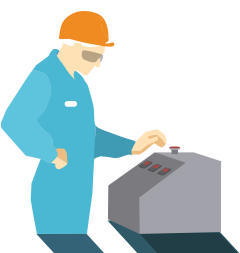Basic Rules for Workplace Design and Adjustment
Sitting: interlinked workplaces with predefined working height
- The height of the elbows of tall men (95%) in sitting position define in most cases the height of the dominant hand activity, which is at +/- 80 cm. The height of the work surface depends also on the workpiece and/or the tools that are used.
- Leave enough room under the table for the knees of a tall man (95%), at least 67cm high.
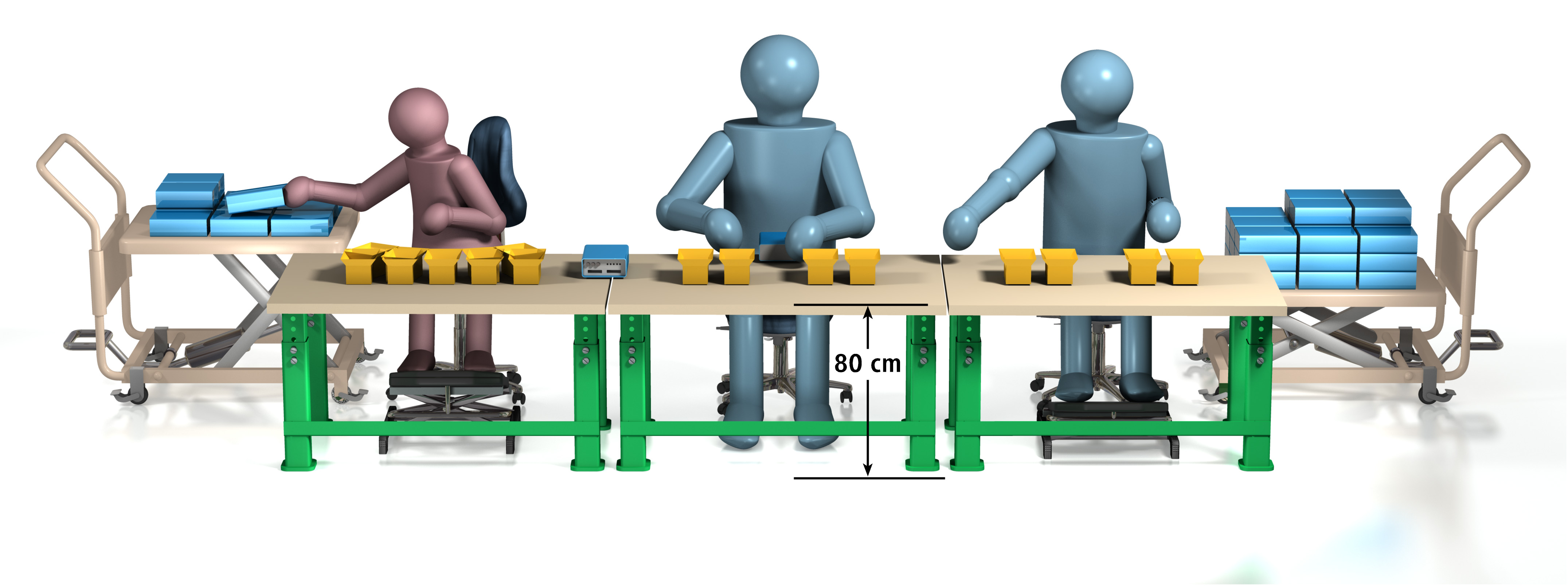
- Provide chairs adjustable in height from 50 - 65 cm to lift a small woman (5%) to the same height of the elbows as the tall man.
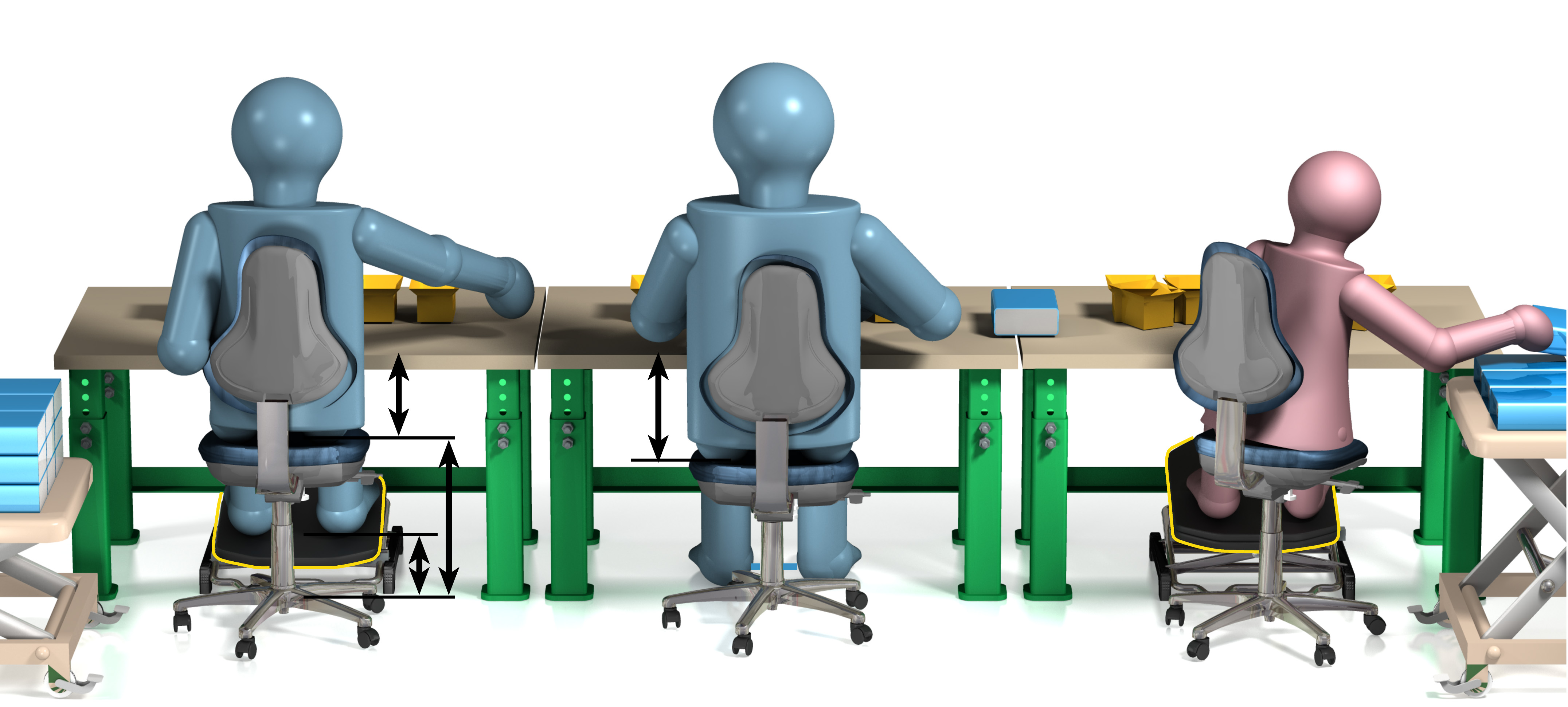
- A footrest will be needed for all but the tallest men in order to compensate height at feet level in a range of up to 15 cm.
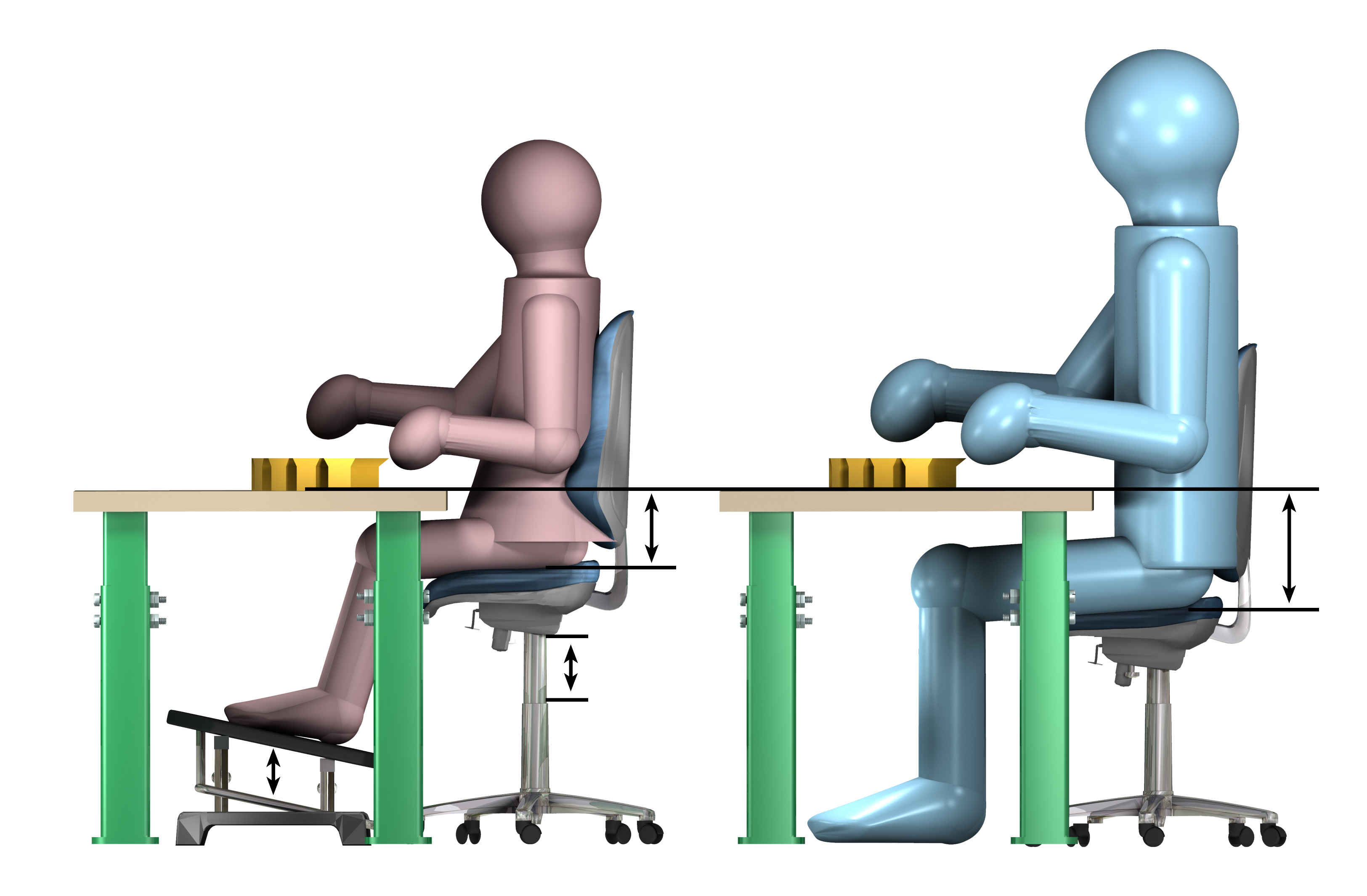
Standing: fixed working height to be used by various persons
- The height of the elbows of a tall man (95%) in standing position in most cases defines the height of the dominant hand activity, which is at +/- 120 cm
- Leave enough room under the table for the feet of at least 12 cm in depth and 10 cm in height.
- Provide means to lift the floor level of up to 20 cm for a small woman (5%) so that her elbows will be at the same height as for a tall man.
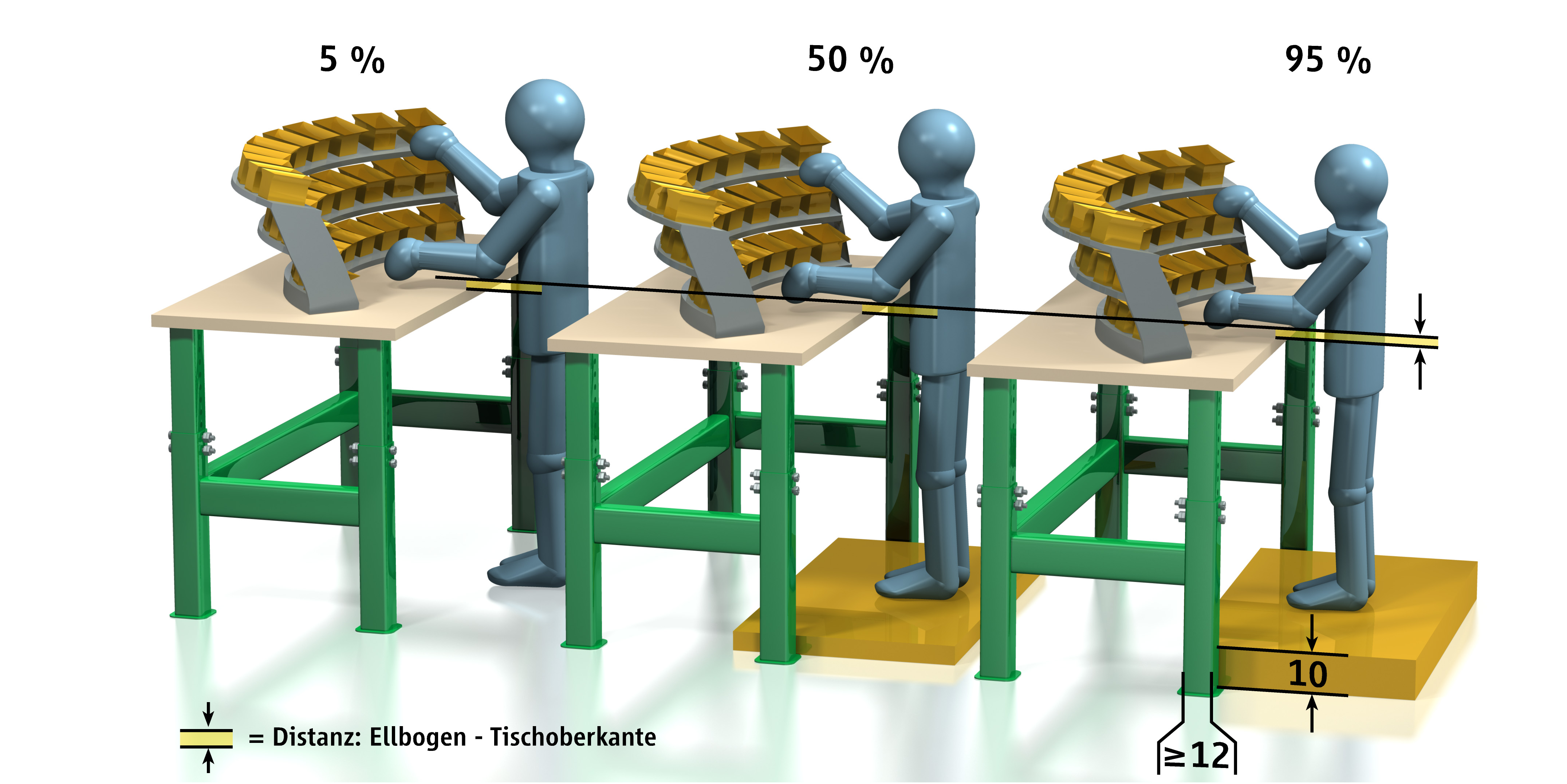
Sit-Stand: Options to enable adopting varying working postures
A universal solution is a workbench easily adjustable in height between 64 – 130 cm. It can support any needs in both sitting or standing posture, independently of the size of the person nor the type of task.
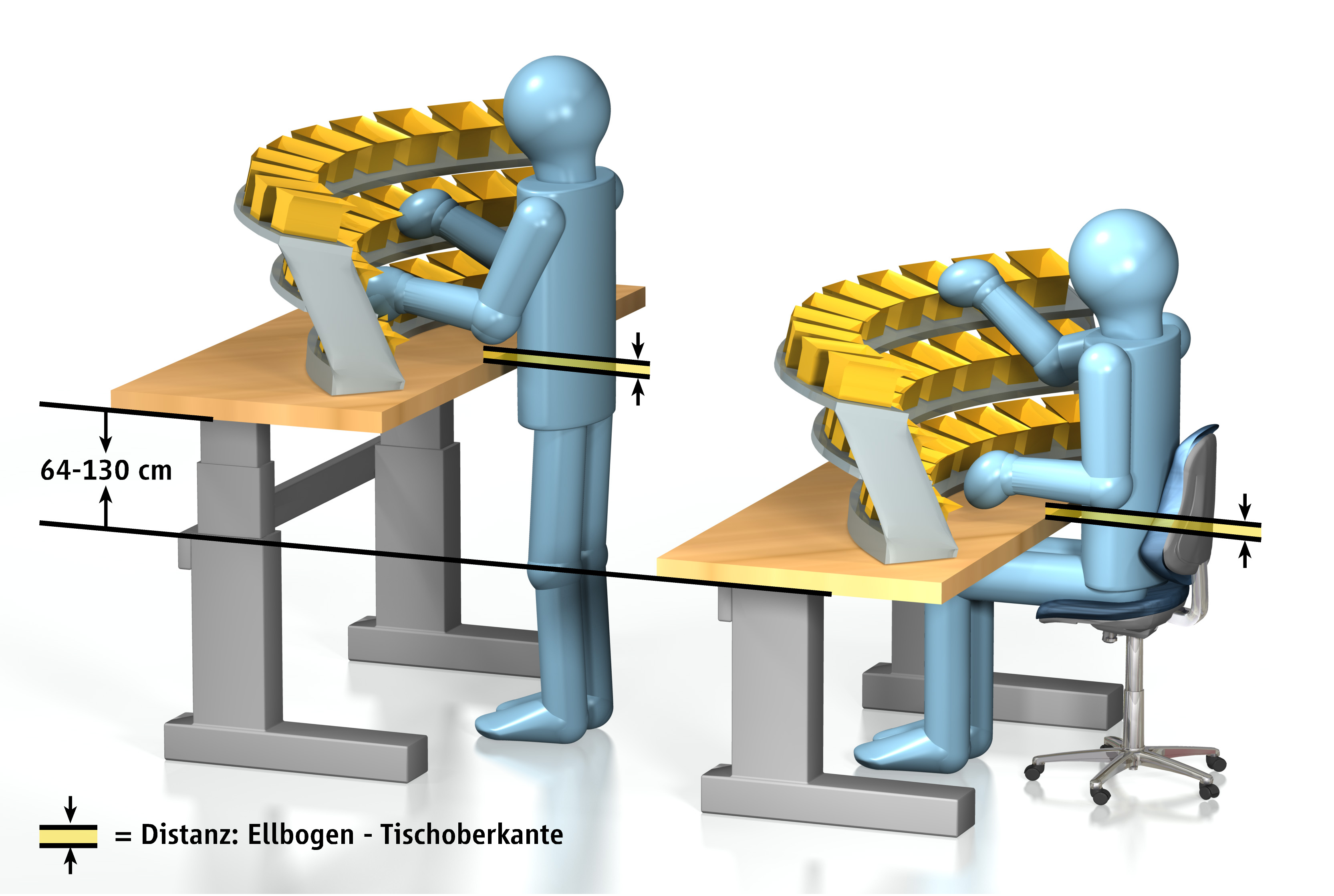
Working in standing posture:
- Determine the optimal height of the workbench in standing posture for a given operator
- Provide a high work chair and adjust the height, in order that the elbows of the operator remain exactly at the same height as in standing posture.
- A footrest will be needed in all cases to compensate at feet level with an adjustable height between 50 - 65 cm. Ideally, footrests are integrated into the workbench.
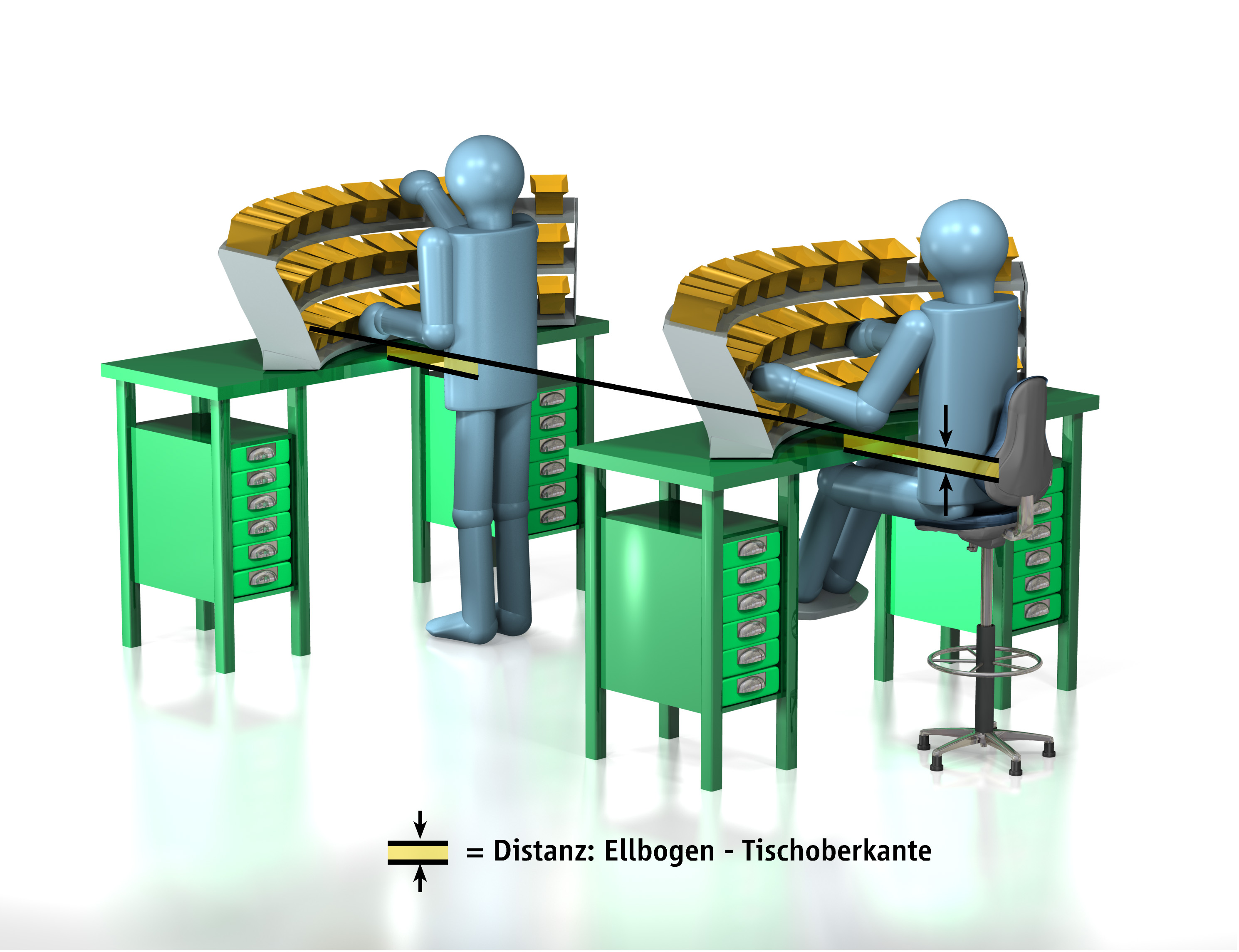
Preview changing tasks in a process which will automatically lead to varying working postures

References:
- EN ISO 14738. Anthropometric requirements for the design of workstations for industries and services.
- EN ISO 11064-1. Ergonomic design of control centers - Part 1: Principles for the design of control centers.

